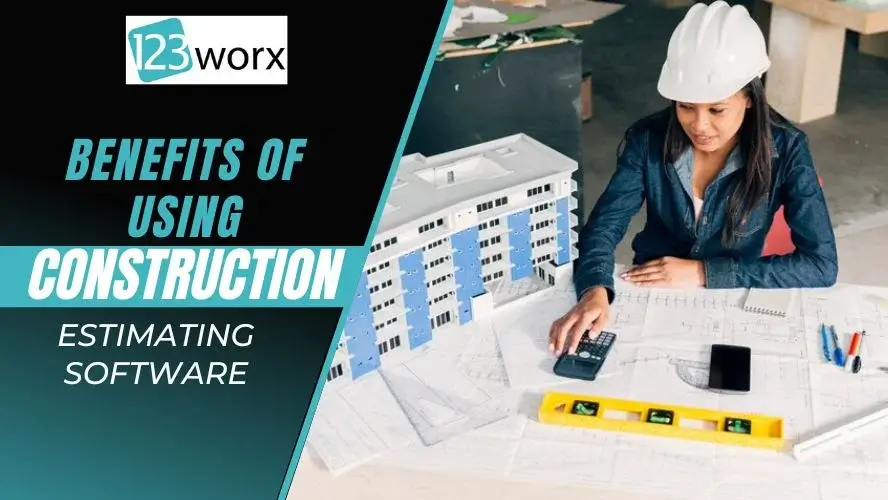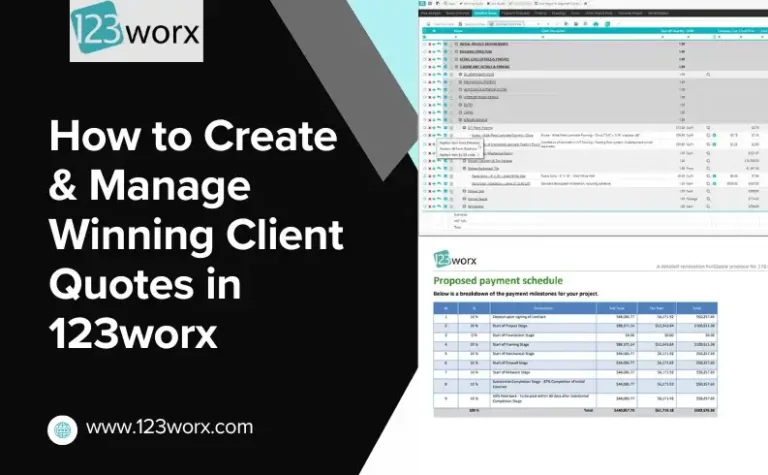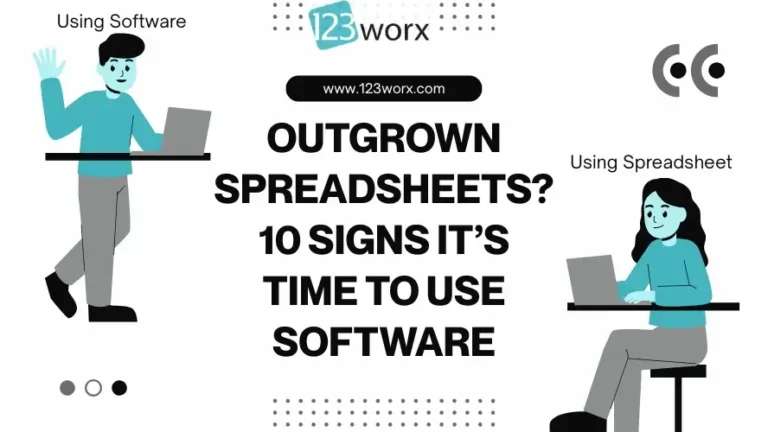Construction project cost evaluation is one of the biggest challenges for contractors, as the success of a project depends on its budget. It requires accurate, efficient, and reliable estimation.
In the past, manual estimating was the way used by contractors, which was time-consuming and prone to costly errors. With the evolution of Construction Estimation Software, professionals in the construction industry can now incorporate their processes for greater efficiency and accuracy.
Some of the key benefits of using construction estimating software are to improve efficiency and accuracy, savings of time and cost, and upgrades in construction project management and decision-making.
In this article, we’ll dive into the aspects to keep in mind while selecting construction estimating software that can help contractors simplify construction costing and estimating processes. Additionally, we’ll provide tips on successfully setting up this technology in your company.
Why Accurate Estimation Matters in Construction
Estimation is one of the most critical factors in a construction project. It involves determining the number of construction materials, labor, and equipment, and the related costs of the project. Usually, this is carried out manually, by the estimators, depending on their knowledge and experience, to come up with an accurate estimate. However, the manual process is labor-intensive and prone to errors.
Top construction estimating software streamlines the industry by automating cost calculations. This software uses advanced algorithms and databases to provide quick and precise project estimates. It speedily crunches numbers to give an in-depth cost breakdown. This happens in a fraction of the time compared to the manual methods, using project parameters such as project size, needed materials, and worker pay rates.
Challenges with Manual Estimating Processes
Before learning the benefits of using estimating software, it makes sense to understand why traditional manual estimating never meets present needs in building construction.
- Time-Consuming and Inefficient
This kind of estimating requires incessant calculation, lookups of material costs, and updating. For a moderately sized project, an estimator will work days on a single bid. This makes the business sluggish and limits the number of bids an enterprise has the capacity to submit.
Example: Five homebuilding projects might mean that a contracting company, placing bids, has time to complete only two full estimates. Meanwhile, software users can deploy all five, automatically increasing revenue potential.
- High Risk of Errors
Even veteran estimators make mistakes with spreadsheets. Errors in formulas, omitted quantities, or out-of-date material prices create inaccurate estimates. Errors almost always translate to budgets going over, delays, and conflicts with customers.
Examples: Wrongly estimating the quantity of concrete to ready a foundation might cause unexpected surprises running into thousands of dollars.
- Lack of Scalability for Modern Projects
As projects get bigger and more complex, single methods are simply unable to keep up. Mega-projects entail thousands of line items, many quotes from subcontractors, and extensive reporting. Manual systems simply are unable to grow to that level, but software deals with it in a snap.
Benefits of Using Construction Estimating Software
Let’s examine the major advantages of construction estimation software and how it has a direct impact on efficiency, profitability, and successful projects.
1. More Efficient and Accurate Estimation
The greatest benefit of software estimates is accuracy. Automation software decreases human fallibility and offers repeatable calculations.
- Programmed computations eliminate the hassles of typing figures.
- Real-time material databases keep prices current, reducing the potential for out-of-date assumptions of costs.
- Estimators can prepare very accurate breakdowns of costs, something which enhances client and stakeholder confidence.
For example: Instead of having to type out each piece of lumber separately, the software uses a pre-assembled material database, automatically calculates expenses, and self-adjusts should expenses change.
Why it matters: More accurate estimates mean contractors can competitively bid without risking their profit margins.
2. Time and Money Savings
Speed is paramount in construction bidding. With software, what took days now takes hours or minutes.
- Contractors are able to generate several bids quickly, yielding greater winning probabilities.
- Automation reduces overhead with a labor hour reduction spent on estimates.
- Cost optimization software involves comparisons side-by-side of building processes, subcontracts, and vendors.
For Example: A small contracting business seeking commercial work has the capacity to cut time devoted to proposal preparations by as much as 40%, directly translatable to more work gained.
Why it matters: Faster, more accurate bids mean higher revenue and greater financial safety.
3. Better Project Management and Decision-Making
Accurate estimates form the foundation of successful project management.
- Estimate vs. actual cost tracking ensures budgets remain in check throughout the project.
- Comprehensive cost reports offer information to aid decision-making, enabling managers to correct schedules, labor, or resource allocation in real time.
- Software allows the forecasting of budgets and risks to be altered beforehand, reducing the likelihood of unpleasant surprises.
For Example: Should labor costs continue above the estimated figure, the software flags this early so changes can occur while the budget remains manageable.
Why it matters: Improved control results in on-budget, on-time projects to help strengthen client relationships.
4. Improved Collaboration and Transparency
Construction work typically has numerous stakeholders, contractors, subcontractors, suppliers, and customers. Software brings communication together, keeping all parties working with the same information.
- Cloud-based collaboration allows team members to edit and view estimates from a distance.
- Clients benefit from increased transparency in costs, which builds trust and credibility.
- Subcontractors can input their costs directly into the system, reducing back-and-forth emails.
For Example: The subcontractors update their labor rate in the software, and the total cost of the project automatically changes, keeping all parties up-to-date.
Why it matters: Effective communication reduces misunderstandings, conflicts, and project delays.
5. Competitive Advantage in Bidding
Aside from efficiency, employing estimating software provides contractors with a competitive advantage.
- More thorough bids impress customers who value transparency.
- Businesses are able to respond quickly to bids, enhancing their success rate.
- Data-informed knowledge from past projects allows for smart bidding decisions.
For example: Between two bidders, the client trusts the one with a clear, software-generated breakdown over a basic spreadsheet
Why it matters: Tech-savvy contractors outperform their competitors who are still retaining archaic manual processes.
Features to Consider When Choosing Construction Cost Estimating Software
Choosing the best construction estimating software is the very first step towards knowing the full benefits of this software.
Here are some of the key features you should look at when evaluating different software:
1. User-friendly interface: Look for software with an intuitive interface, simple navigation, and a user-friendly interface. This will ensure the user can use the software quickly and efficiently without trouble. In other words, it must take minimal time for training with a shorter learning curve.
2: Integration capabilities: Consider the software that can easily integrate with other running tools or systems in your organization, like accounting systems, project management software, or even BIM software. This can allow the smooth sharing of data and improved collaboration. Small and medium-sized companies should consider buying integrated software that comes with estimation software, along with all the other project management features.
3: Database and Material Libraries: It’s vital to have databases and material libraries for accurate estimates. Make sure that it contains up-to-date databases of material costs, labor rates, and equipment costs. Further, the software should also allow users to set up and design material libraries.
4: Reporting and Analysis: Look for solid reporting and analysis capabilities in the software. The software should display project costs, material amounts, work efficiency, and much more. These reports provide important insights required during decision-making and project management.
5: Cloud-based collaboration: Opt for cloud-based construction management software that supports real-time teamwork. It allows access to project data from anywhere at any given time. Further, its mobile accessibility lets the estimators update estimates on the go, thus enhancing efficiency and productivity.
How to Implement Construction Estimating Software in Your Organization?
Implementing construction estimating software in your organization must be well-planned and executed. As a construction management professional, you try the following steps. It will help guide you with the implementation steps:
- Analyze what you need: To determine the unique requirements of your organization, whether small or large, will specifically need while estimating. Project size, volume of estimates, level of detail required, etc., should be considered.
- Research and select software: Explore the number of different construction estimating software that perfectly suits your requirements. Look at features, pricing, user reviews, and support services to shortlist your preferences and decide.
- Prepare your Team: Introduce the software to your estimating team with guidance and support. Familiarize them with the software’s layout, features, and capabilities. Foster clear communication and tackle any issues or inquiries from them.
- Pilot Implementation: Conduct a pilot phase, to begin with a test software run and look for any bugs or issues. Start with a small project or part of your estimating team and estimate. Collect thoughts and tweak things as needed before introducing the software to everyone. Gather feedback and make necessary adjustments before introducing the software to everyone.
- Monitor and Evaluate: Monitor continuously the application and use of the software. Evaluate its impact on project efficiency, accuracy, and overall performance. It is recommended to get feedback from estimators and project managers on what’s required. Also, consider reviewing the work routine in needy areas.
- Optimize and Scale: Use the implemented software’s advanced functionalities to get the most out of it. Use additional integration with other applications and custom workflows, and tweak the software to align with your organization’s changing needs. Expand the software’s capacity as your entity grows, tackling larger projects and managing greater estimating volumes.
You can try the 123worx construction estimating app to make your work easy.
How Does Using a Construction Estimating App Make Your Work Better?
Mobile apps are easier to use and handle. Your subcontractors and labor can easily install and start using it. These are the benefits of app-based software, where you only need to circulate the apps to your team and encourage them to use them for live updates.
Mobile Estimating Apps: Estimation on the Go
One of the growing trends is the use of mobile construction estimating apps.
- Subcontractors and site managers can update estimates from the field.
- Mobile apps improve real-time collaboration by eliminating delays in reporting.
- Easier adoption since apps are often simpler and more intuitive than desktop tools.
Example: A project manager at a job site can instantly adjust labor costs after an unexpected delay, keeping estimates current.
Additional Benefits of Using Construction Estimating Software
To explain further, here are some oft-overlooked advantages:
- Regulatory Compliance: Some software comes with tax and compliance modules to avoid litigation.
- Historical Data Storage: Save historical project data for benchmark purposes and better future estimates.
- Sustainability Planning: Consider environmentally friendly alternatives and track environmental costs.
- Scalability: From minor renovations to mega projects, the software adapts to business growth.
Embracing Technology for Better Construction Estimating
The benefits of using construction estimating software extend far beyond cost savings. By improving efficiency, accuracy, collaboration, and decision-making, these tools transform the way SMBs compete in the construction industry.
Construction estimating software can lead to a broad set of benefits that greatly enhance efficiency and accuracy in the estimation process.
It involves automated calculations, real-time data, and analytics that enhance the ease of collaboration among construction project professionals. This helps to make smarter choices, cut costs, and improve project outcomes.
To maximize the benefits of construction estimating software, evaluate the diverse options, select software that aligns well with your organization’s needs, and then implement it effectively.

As a Vice President at 123worx, Construction Management Platform, Bharat Rudra has worked with hundreds of business executives searching for best-suited software for their construction business with a wide array of requirements. Bharat takes pride in helping construction businesses solve their business and project management challenges. Feel free to reach Bharat if you have any questions. You can find him on LinkedIn or reach him at brudra@123worx.com













